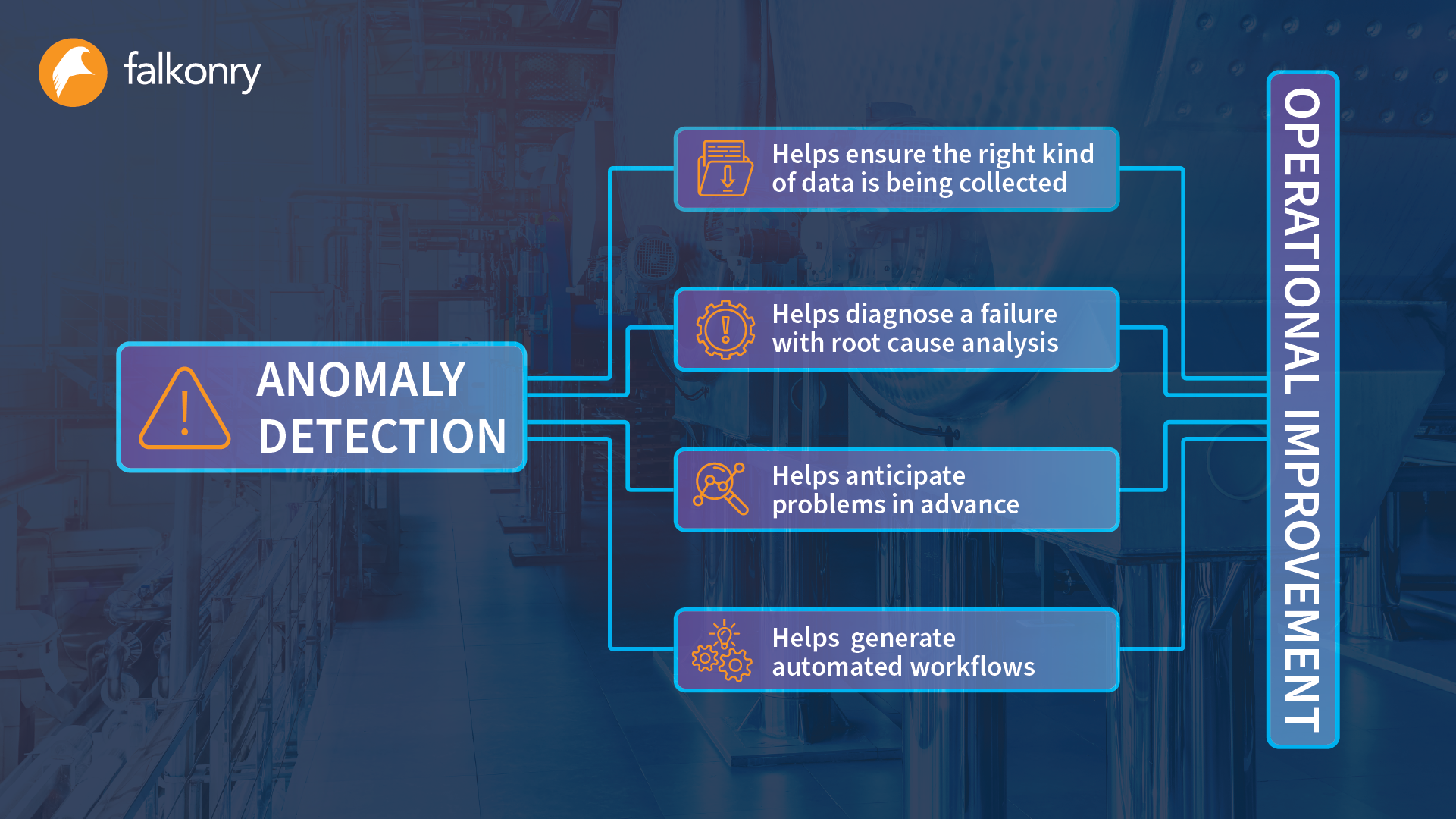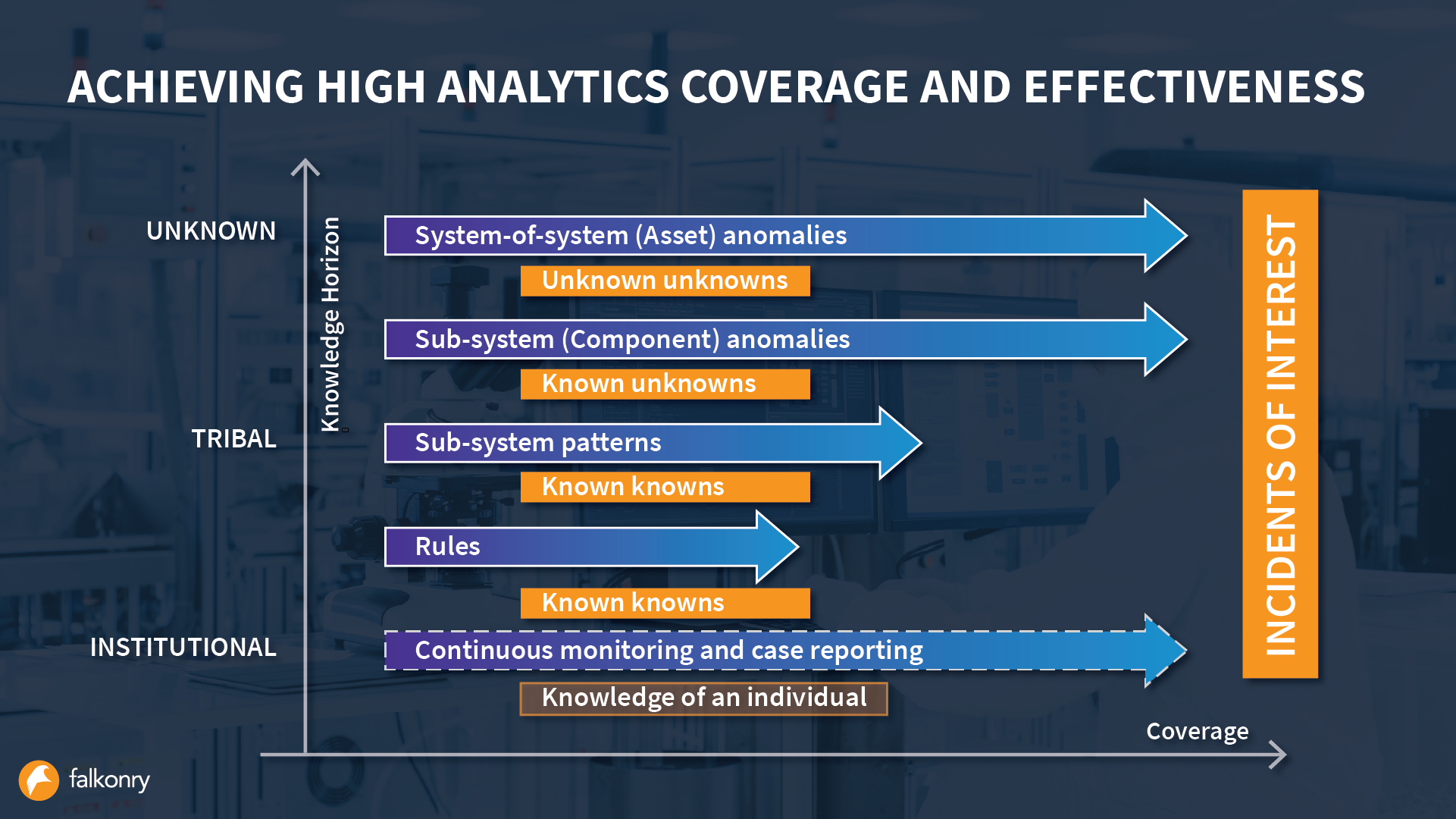Making smart manufacturing easy
Key takeaways:
- Manufacturers face hurdles like complex set up and connectivity issues when implementing scalable analytics for smart manufacturing.
- Addressing long tail problems is crucial for getting the most value from data analysis, but obstacles such as connectivity issues hinder progress.
- Falkonry’s seamless integration with industrial middleware removes upfront development struggles and allows operations teams to focus on extracting insights from existing data to optimize plant operations.
It’s no secret that smart manufacturing is hard. In fact, our work over the past decade has helped us form a deeper understanding of and appreciation for the challenges faced by manufacturers when it comes to implementing scalable AI projects. The obstacles are many: from time-consuming data preparation and intricate tuning processes to the complex landscape of diverse, unique, and changing problems. The value to extract from operational data remains difficult to reach due to scaling difficulties of connectivity and setup.

Go where the most value lies
To help manufacturers succeed in their quest for enhanced efficiency and superior business outcomes, we’ve consistently advocated for exploring the long tail – that realm of smaller, unique challenges where the most value can be found. The strategy involves addressing a variety of problems on a larger scale using a unified approach. However, several factors hinder this pursuit:
- The painful set up process required to get AI running is a major roadblock. Identifying thresholds and grouping variables for analysis is a time-consuming endeavor that operational teams would rather avoid.
- A lack of problem recurrence makes conventional analysis even more difficult. Typically, conventional analytical systems rely on data from past problems to build future estimations. However, the complexity of real-world scenarios means that similar problems may not recur in identical ways, resulting in patterns that are hard to discern. Consequently, the lack of a sufficient number of examples to learn from diminishes confidence in such systems.
- Connectivity poses another overlooked obstacle, with the time-consuming integration of Level 1 and Level 2 plant systems into analytical systems requiring extensive IT work.
The million-dollar question then is – how can we overcome such challenges? The answer lies in an intelligent, user-friendly method that requires no set up efforts and can integrate with the existing operating ecosystem.
Let’s look at how the above challenges can be addressed by this approach:
Hit the ground running
AI typically requires laborious IT preparatory work to kick it off. By removing the need for the extensive upfront manual effort in the form of time-consuming activities such as data labeling, data structuring, and the meticulous process of feature engineering, time to value is shortened. Beyond mere simplification, the system continually adapts to behavior changes automatically. With this, your operations team is freed from the need to constantly monitor and adjust the system based on evolving behavior patterns. Instead, operations personnel can channel their time and expertise into what matters most – distilling root causes of proactively identified events from the immense plant data exhaust to optimize operations.
Eliminate dependence on historical data
Conventional analytical systems typically depend on historical data. This approach is not scalable as similar problems may not recur in identical ways. In contrast, Falkonry takes a novel approach by leveraging all available real-time automation data to uncover anomalies and excursions as they happen. The self-supervised AI autonomously learns typical system behavior and surfaces excursions or deviations, without upfront data set up and manual analysis effort. This approach also eliminates the need to set up thresholds and focuses the attention of plant personnel only on events that are truly novel. By packaging the detected anomalous behavior into reports, Falkonry significantly reduces troubleshooting and root cause analysis efforts.
Facilitate seamless integration
Falkonry’s recently announced seamless compatibility with iba provides a ready-to-integrate solution for the data challenge. By seamlessly integrating with iba and other off-the-shelf industrial data middleware, we ease the upfront struggles of software development and policies surrounding network firewalls. This means manufacturing operations leaders can focus on what is in their data and extract value from it, rather than grappling with data transfer logistics. Falkonry’s ‘no set up needed’ approach makes it a highly accessible solution that effectively addresses the data challenge.
In a space as challenging as smart manufacturing, the value of an analytics system that requires no set up cannot be emphasized enough. By eliminating the initial hassles, and realizing benefits quickly, manufacturers can swiftly accelerate their scaling efforts. The homogeneous approach fosters confidence and ensures repeatability.





